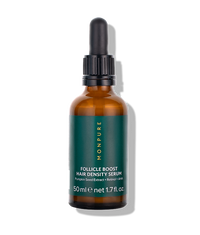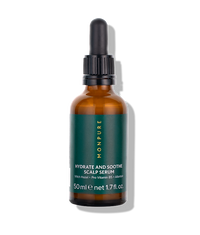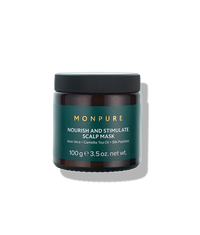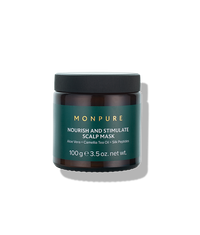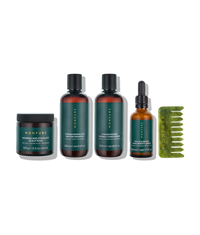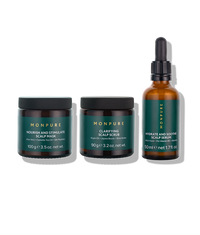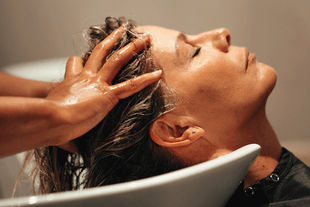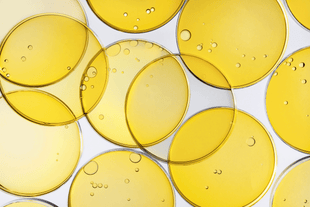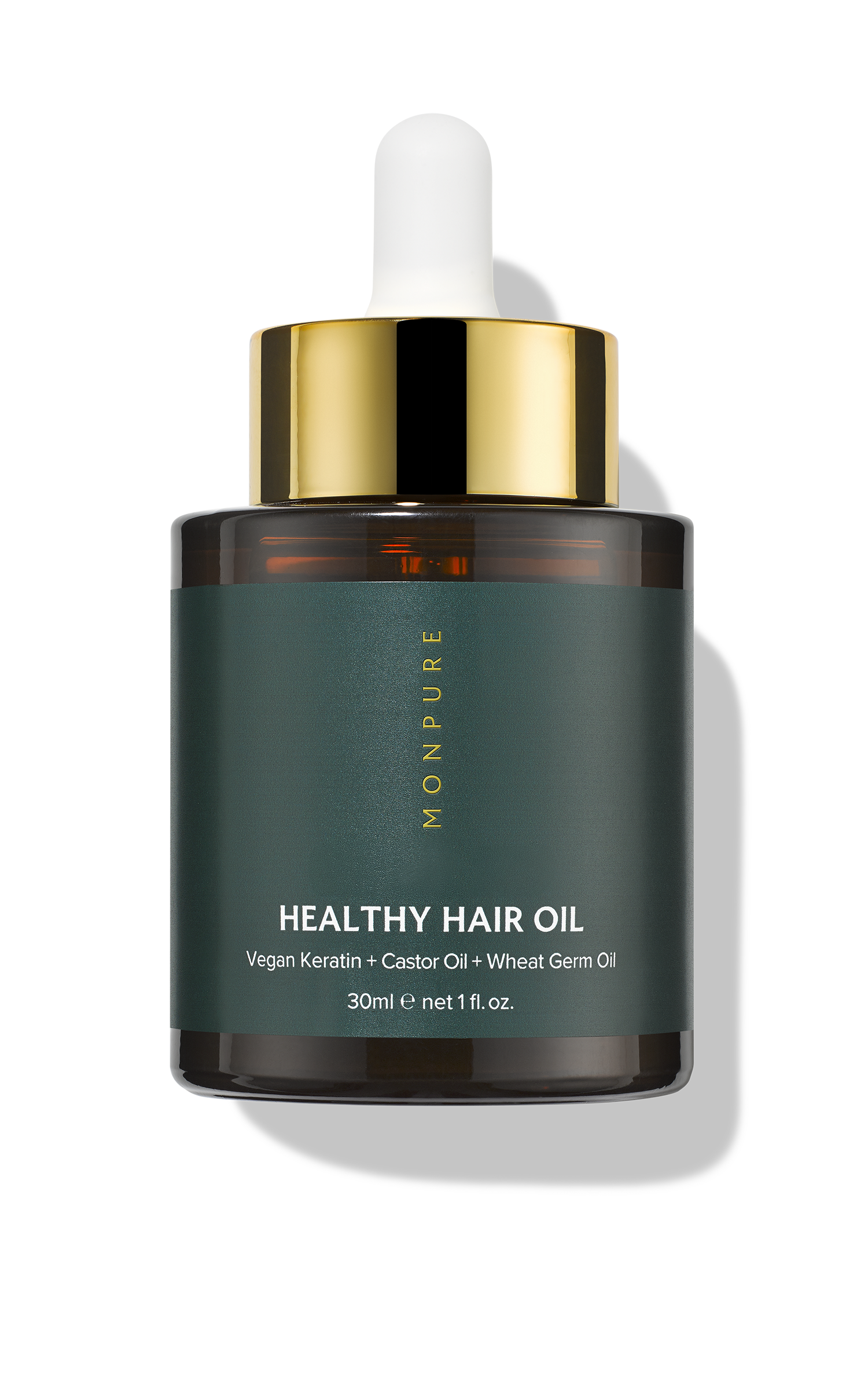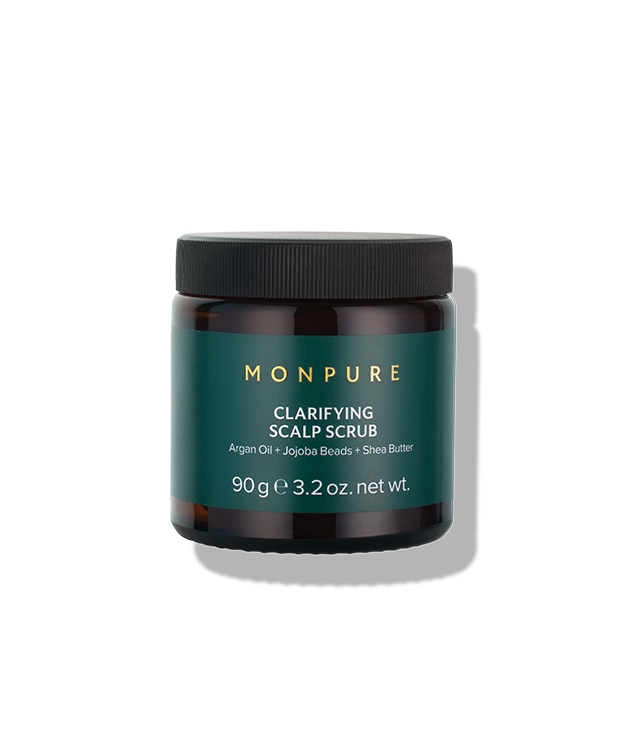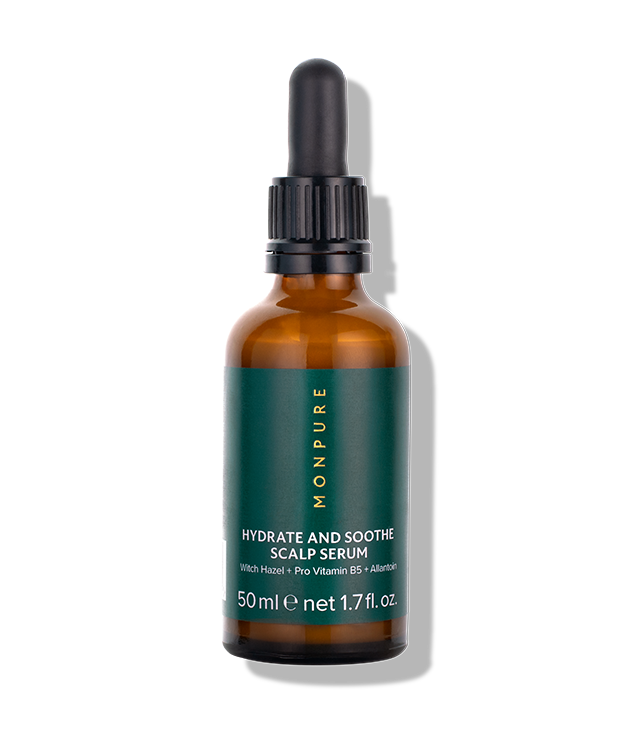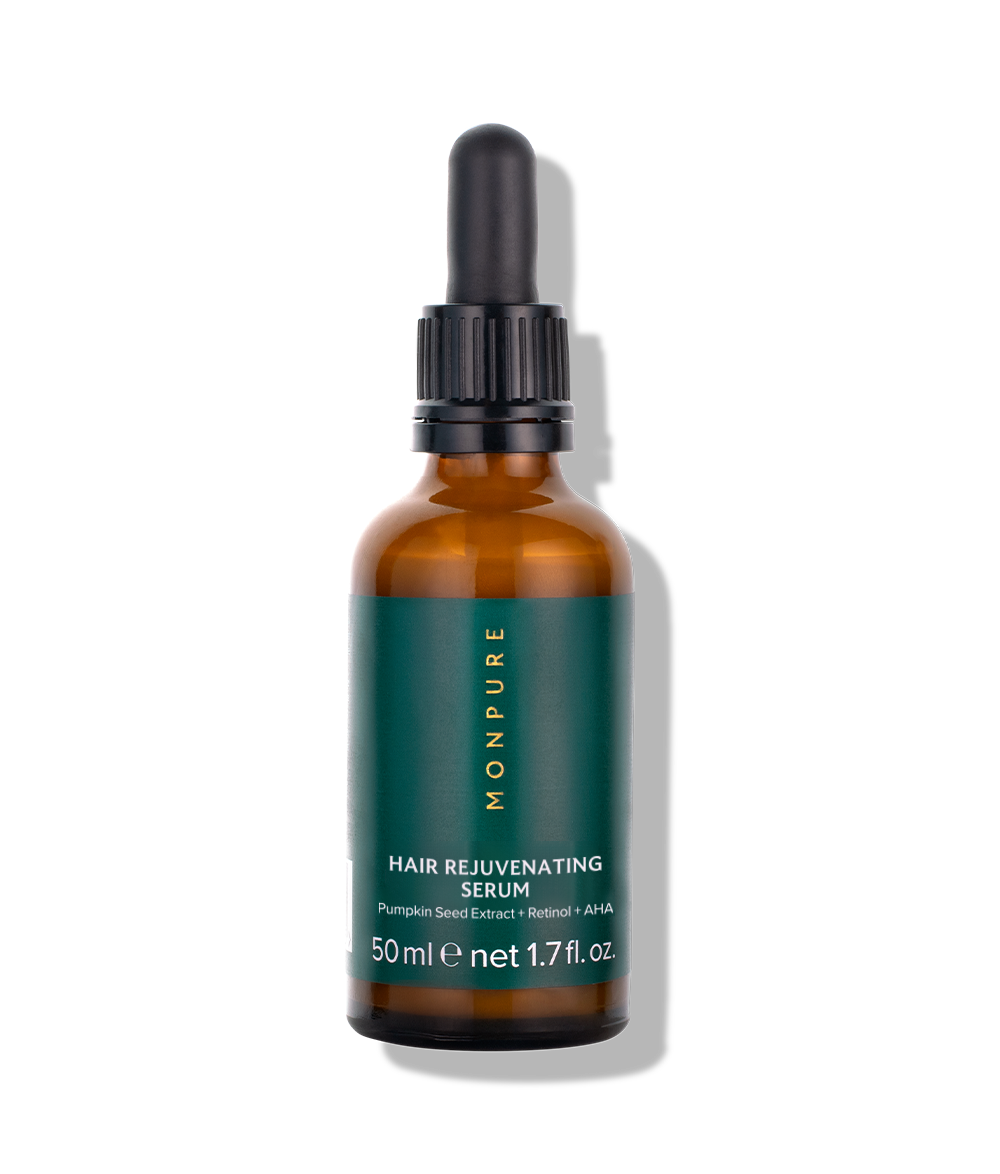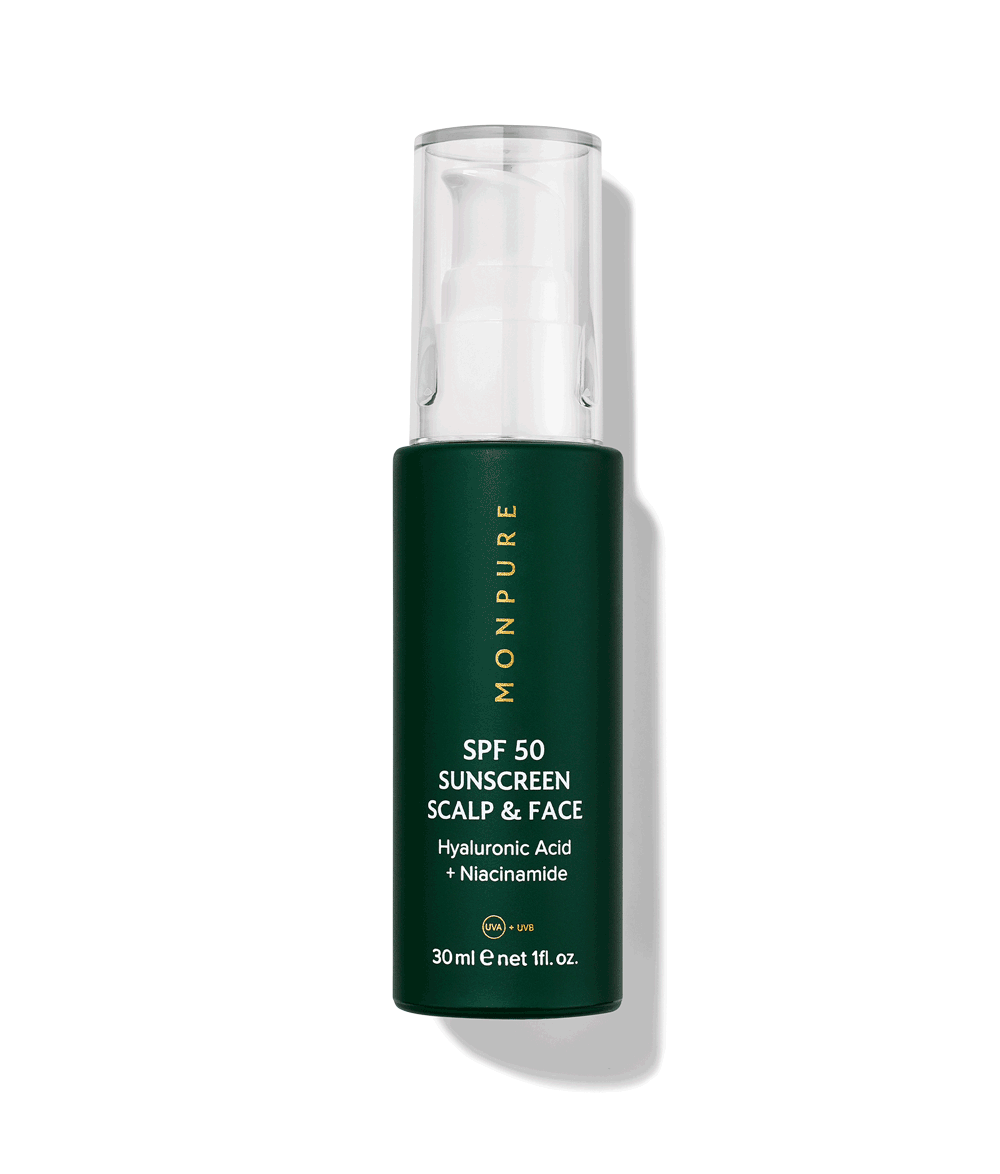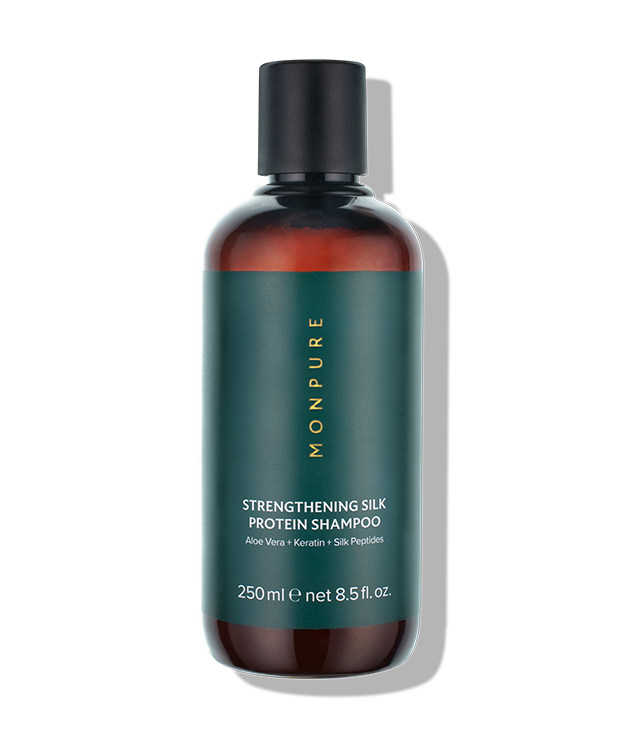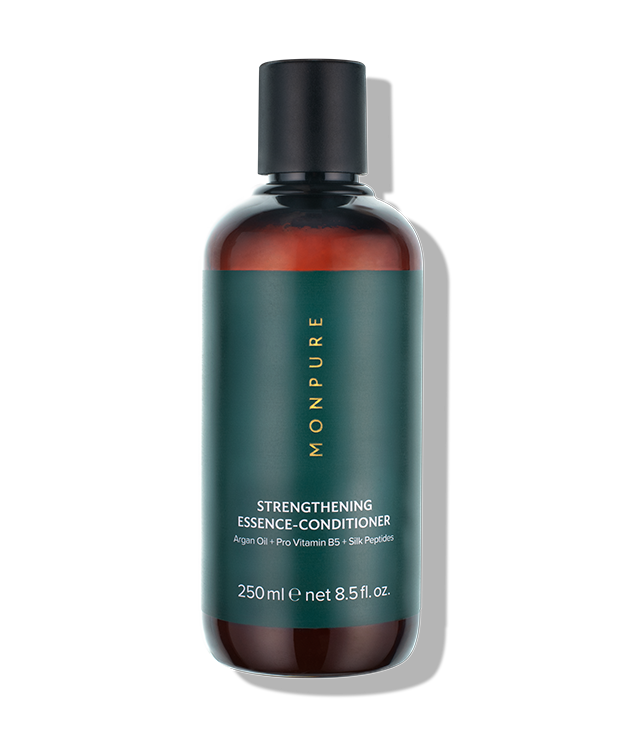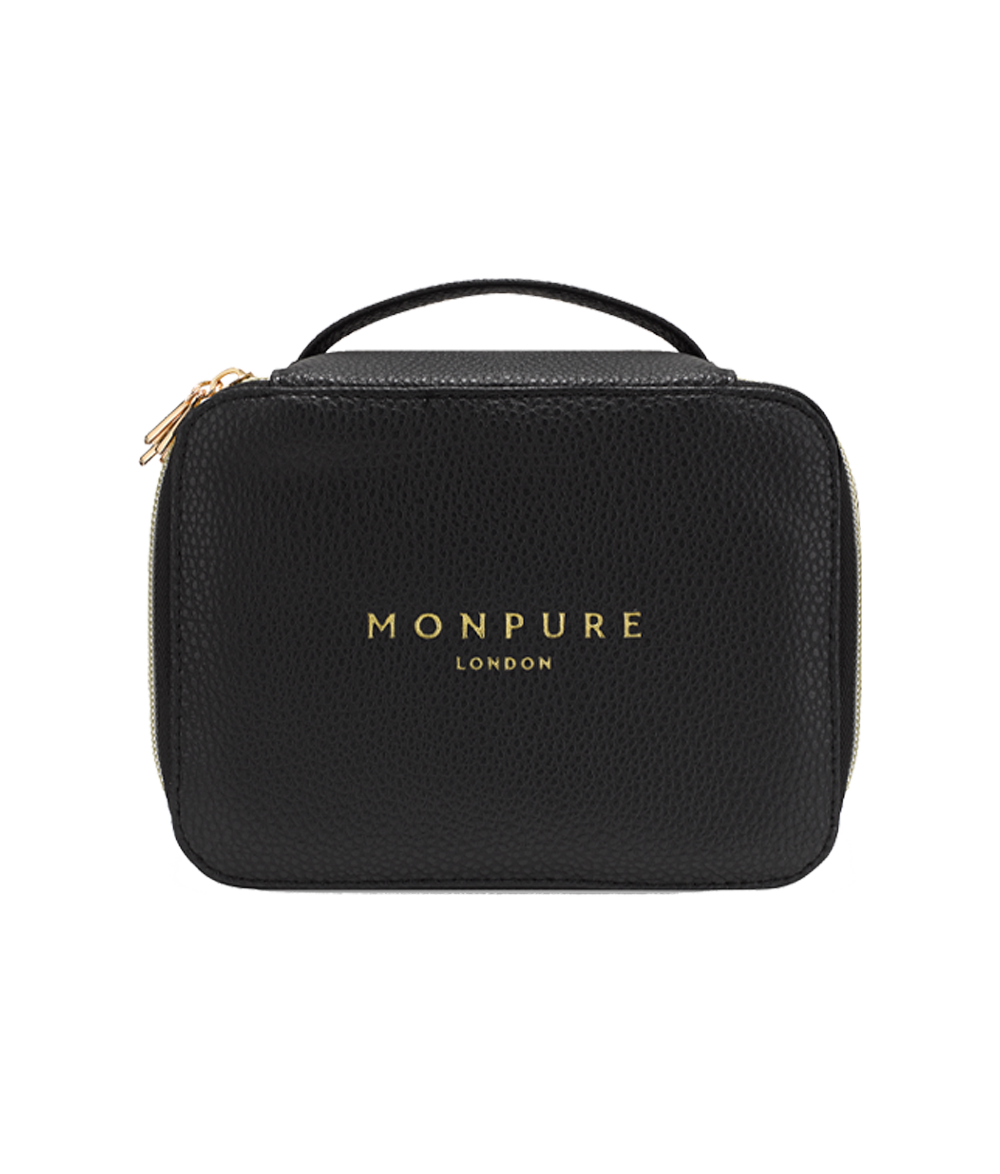The Hair and Scalp Terms Everyone Should Know
Getting to the bottom of your scalp or hair concerns requires a little bit of brushing up on some key hair and scalp vocabulary. MONPURE are here to ensure you're well-versed in everything from ingredient no-gos, to medical conditions, to the scientific jargon behind your strands. Keep reading to discover the ultimate hair and scalp glossary that will elevate you to connoisseur status.
THE SCIENCE OF HAIR AND SCALP HEALTH
Anagen
Pronounced an · uh · jn
The anagen phase is the active or growth phase of the hair growth cycle. It is marked by rapid division and differentiation of cells in the lower portion of the hair follicle and by the lengthening of the hair shaft. In healthy individuals, about 90% of hairs are in the anagen phase at any given time. During this phase the hair grows about 1cm every 28 days. The anagen phase of the hair growth cycle typically lasts between two to six years.
Catagen
Pronounced ka · tuh · jn
The catagen phase is the transition phase of the hair growth cycle. This phase usually lasts between ten and twelve days, during which the follicle shrinks and active hair growth stops. The hair also separates from the bottom of the hair follicle, yet remains in place. About 3% of hairs are in the catagen phase at any time.
Collagen
Pronounced ko · luh · jn
Collagen is the most abundant protein found in the human body. It supports scalp elasticity and healthy, strong hair. As we age, our collagen stores become depleted, leading to an ageing scalp and hair.
Cortex
Pronounced kaw · teks
The cortex is the middle layer of the hair shaft located between the cuticle and the medulla, and is the thickest layer of the hair. It contains most of the hair’s melanin (pigment), giving the hair its colour.
Cuticle
Pronounced kyoo · tuh · kl
The cuticle is the outermost layer of the hair shaft. It is formed from overlapping, flattened cells that strengthens the hair shaft and protects the inner layers from damage.
Dermal Papilla
Pronounced duh · muhl puh · pil · ee
The dermal papilla is a cluster of specialised cells that reside at the base of the hair follicle. The dermal papilla plays a primary role in the regulation of hair growth. It functions as a signalling centre during initial hair development in the embryo, as well as during the adult hair cycle. The dermal papilla transmits signals to the surrounding skin cells, maintaining the proliferation of the growing hair shaft.
Hair Density
Pronounced heuh den · suh · tee
Hair density refers to the amount of individual strands of hair on your scalp. Hair density is generally highest at the crown of the head. Hair density can be affected by hormonal fluctuations, nutritional deficiencies, genetics and age which can lead to a process of gradual thinning in which hair density is reduced.
Read more about the process of hair thinning here.
Hair Elasticity
Pronounced uh · la · sti · suh · tee
Elasticity refers to the hair’s ability to stretch and return to its original shape. Healthy hair has a high level of elasticity, allowing it to hold bounce, body and curl formation. The cortex of the hair shaft contributes most to the hair’s elasticity, as this layer of the hair contains the most moisture and keratin protein fibres.
Hair Follicle
Pronounced heuh fo · luh · kl
Hair follicles are small organs found in the epidermis layer of the skin. Hair strands grow from the bottom of the follicle, while the root of the hair is made up of protein cells that are nourished by oxygenated blood from nearby blood vessels. Hair grows out of the skin and reaches the surface of the scalp. Sebaceous glands surrounding the hair follicles produce oil which work to nourish and hair and scalp.
Read more about the hair follicle in the hair growth cycle here.
Hair Porosity
Pronounced heuh paw · ruhs · i · tee
Hair porosity refers to your hair’s ability to absorb and retain moisture. Porosity influences how well moisture and oils pass through the hair’s cuticle layer. Hair porosity is typically divided into three categories: low, medium and high porosity. While low porosity hair has cuticles that are closely bound together, high porosity hair has cuticles that are more widely spaced across the hair shaft.
Read more about identifying your hair porosity here.
Hair Type
Pronounced heuh tipe
Hair type, from pin-straight to tightly coiled, depends on the shape of the hair follicle itself. Straight hair emerges from a round follicle, which oval and twisted oval follicles produce wavy and curly hair. The four broad categories of hair type fit into straight, wavy, curly and coily hair.
Type 1 hair = straight hair
Type 2 hair = wavy hair
Type 3 hair = curly hair
Type 4 hair = coily hair
However, there are actually three subcategories within each of those categories that present a more detailed picture of the curl pattern or shape of the hair (eg., 4a, 4b, 4c). The higher the number and letter, the curlier the hair and tighter the coil.
Melanin
Pronounced meh · luh · nuhn
Melanin is the natural pigment of the hair. The melanin is primarily distributed in the middle, cortex layer of the hair strand and is embedded between keratin fibres. Hair colour arises from the distribution, concentration, and blending of two types of melanin: brown and black eumelanins, and less commonly, red pheomelanins. The depletion or disappearance of melanin from the hair fibres is the phenomenon that leads to colour loss and consequent hair greying or whitening with age.
Sebum
Pronounced see · bm
Sebum is an oily, waxy substance that is secreted by the sebaceous glands. It mixes with lipids to form a moisturising, protective layer on the surface of the scalp, shielding against pathogens such as bacteria and fungi. Along with the face and chest, the scalp has the highest concentration of sebaceous glands. Sebum travels through the follicular duct, a pathway that connects the sebaceous gland to the hair follicle. Sebum production is affected by hormonal fluctuations, particularly the androgen (male) hormone, testosterone.
Read more about how to treat an oily scalp here.
Telogen
Pronounced tel · uh · jn
The telogen phase is the resting phase of the hair growth cycle. During this phase, the hair cannot grow and eventually sheds from the scalp. The telogen phase typically lasts around three months. Generally, 10 to 15% of hairs are in the telogen phase. The telogen phase is also marked by new hairs that start to form in the follicles that have just released hairs during the catagen phase.
HAIR AND SCALP CONDITIONS
Alopecia
Pronounced a · luh · pee · shee · uh
Alopecia is the umbrella medical term for losing more hair than is replenished, resulting in either thinning or hair loss. Alopecia primarily affects the scalp and is linked to a variety of factors, ranging from hormonal fluctuations to nutritional deficiencies to autoimmune conditions. The three most common types of alopecia include:
- Alopecia areata
An autoimmune condition in which the body’s immune system attacks the hair follicles, leading to patchy hair loss.
- Androgenic alopecia
AKA male or female pattern baldness, this form of hair thinning is gradual and progressive and results from an increased presence of the androgen hormone, DHT, a byproduct of testosterone.
- Telogen effluvium
A temporary, rapid onset form of hair shedding that is usually triggered by stress, trauma or serious illness. It results in an excessive amount of hair loss in which 30% more hairs shift into the shedding phase than usual.
Read more about alopecia awareness here.
Oxidative Stress
Pronounced ok · suh · day · tuhv stres
Oxidative stress refers to an imbalance between the production and accumulation of oxygen reactive species (ROS) in our cells and tissue. Oxidative stress occurs due to an imbalance between free radicals (unstable molecules that damage cellular structures) and antioxidants in the body. Oxidative stress and the formation of free radicals is brought about by aggressors such as pollutants, UV radiation, cigarette smoke and pesticides. In terms of the hair and scalp, oxidative stress contributes to hair loss as well as conditions such as dandruff, psoriasis and seborrheic dermatitis.
Read more about the impact of oxidative stress on the hair and scalp here.
Scalp Acne
Pronounced skalp ak · nee
Scalp acne refers to breakouts and pimples that develop on the scalp or hairline. Scalp acne typically emerges when hair follicles are clogged or congested with excess sebum or dead skin cells, which leads to inflammation in the hair follicle. Scalp acne can be treated with gentle and regular scalp exfoliation with the Clarifying Scalp Scrub (see ‘exfoliation’), as well with anti-inflammatory ingredients. MONPURE’s anti-inflammatory heroes include aloe vera, Pro Vitamin B5, allantoin and witch hazel water.
Seborrheic Dermatitis
Pronounced seh · boh · ree · ick duh · ma · tai · tuhs
Seborrheic dermatitis is a common, non-contagious scalp condition that causes scaly, itchy patches of red skin and dandruff. There are a cluster of factors that may contribute towards the condition, including an overgrowth of yeast called Malassezia, increased androgen (hormone) levels and a family history of dermatitis. Seborrheic dermatitis is also more likely to emerge among people born with naturally high sebum production. ‘Seborrheic’ refers to the sebaceous glands, while ‘derm’ refers to the scalp skin. Seborrheic dermatitis is most common among infants younger than three months, as well as adults aged 30 to 60.
Psoriasis
Pronounced suh · rai · uh · suhs
Psoriasis is an inflammatory and autoimmune skin condition that can affect the skin, including the scalp. It is caused by the rapid overproduction and build-up of skin cells, in which the immune system mistakenly sends signals to these skin cells to multiply too quickly. It manifests as raised patches of flaky, dry and reddened skin. Psoriasis is a chronic condition that presents itself in cycles or flare-ups. Most cases of psoriasis emerge before age 35.
MONPURE’S UNIQUE INGREDIENTS
Alpha Hydroxy Acids (AHAs)
Pronounced al · fuh hai · drok · see a · suhdz
Alpha Hydroxy Acids (AHAs) are a group of animal and plant-derived acids that are primarily used as gentle exfoliants. The AHA found in MONPURE’s formulas is called Lactic Acid, which functions to exfoliate and decongest hair follicles, promote healthy cell renewal and stimulate collagen production. MONPURE’s plant-based lactic acid is derived from sugar fermentation and can be found in the Follicle Boost Hair Density Serum.
Antioxidants
Pronounced an · tee · ok · suh · dnt
Antioxidants refer to molecules that inhibit oxidation, a chemical reaction that creates the free radicals that damage our cells. Antioxidants fight and neutralise free radicals, which are harmful molecules that have at least one unpaired electron. Antioxidants include Vitamins A, C and E, which hold an abundance of benefits for the hair and scalp. Examples of antioxidants in MONPURE’s formulas include camellia tea oil and Vitamin C.
Antioxidants play a vital role in offsetting the effects of oxidative stress and the formation of damaging free radicals. Read more about the impact of oxidative stress on scalp and hair health here.
Antioxidants are found in…
Nourish and Stimulate Scalp Mask
Follicle Boost Hair Density Serum
Hydrate and Soothe Scalp Serum
Astringent
Pronounced uh · strin · jnt
Astringents are liquid-based substances that constrict body tissue. In terms of the hair and scalp, astringents shrink the appearance of pores, tighten the scalp, thoroughly cleanse the skin and relieve scalp irritations. Examples of astringents in MONPURE’s formulas include witch hazel water and allantoin.
Astringents are found in…
Follicle Boost Hair Density Serum
Hydrate and Soothe Scalp Serum
Emollient
Pronounced uh · mo · lee · uhnt
Emollients are softening, moisturising substances that provide a protective, breathable layer on the scalp and hair to lock in moisture. Emollients smooth down the cuticle surface, allowing for easier detangling, boosted shine and a silkier feel to the hair. Examples of emollients in MONPURE’s formulas include grape seed oil, camellia tea oil and coconut oil.
Emollients are found in…
Strengthening Essence-Conditioner
Follicle Boost Hair Density Serum
Nourish and Stimulate Scalp Mask
Exfoliation
Pronounced ek · sfow · lee · ay · shn
Exfoliation refers to the process of removing dead skin cells and build-up from the surface of the scalp using either a chemical or physical substance. Physical exfoliation with the Clarifying Scalp Scrub includes the process of dislodging and unclogging debris, sebum and build-up from the follicles with biodegradable, gentle jojoba beads. Chemical exfoliation with the Follicle Boost Hair Density Serum includes using gentle acids to rid the scalp of build-up and increase cell turnover. The chemical exfoliants formulated in the MONPURE solutions include retinol and lactic acid.
Humectants
Pronounced hyu · mek · tents
Humectants are water-loving ingredients that attract and retain moisture into the top layer of the skin, either by drawing water vapour from the environment or through deeper layers of the skin. Examples of humectants in MONPURE’s formulas include glycerin, witch hazel water and vegan keratin.
Retinol
Pronounced reh · tuh · nol
Retinol is a type of retinoid, a derivative of Vitamin A, that is used primarily for its anti-aging benefits. Gentle retinoids such as retinyl palmitate exfoliate the scalp on a cellular level, and aid in decongesting follicles, rebalancing the scalp, synthesising collagen, minimising sebum production and speeding up cell turnover. Retinol also improves the absorption of other beneficial ingredients, helping to maximise their results. Retinol can be found in MONPURE’s Follicle Boost Hair Density Serum.
Salicylic Acid
Pronounced sal · uh · sil · ik a · suhd
Salicylic acid belongs to a class of acids called beta hydroxy acids (BHAs). Salicylic acid works to treat scalp acne, psoriasis, dandruff and seborrheic dermatitis. It is oil-soluble, allowing it to deeply penetrate the follicles and decongest them. Salicylic acid is a keratolytic, meaning it aids in exfoliation and soothing inflammation. Salicylic acid can be found in MONPURE’s Hydrate and Soothe Scalp Serum.
Vegan Keratin
Pronounced vee · gn keh · ruh · tn
Keratin is a fibrous, structural protein found in our hair, skin and nails and forms the building-blocks of the hair fibre. Keratin serves vital strengthening and protective functions for the hair. MONPURE’s vegan keratin, made from hydrolyzed proteins derived from wheat, corn and soybeans, is found in the Strengthening Silk Protein Shampoo. It works to fortify the structure of fragile hair strands, smooth down damaged cuticles, boost shine and reduce frizz.
Vegan Silk Peptides
Pronounced vee · gn silk pep · tidez
Vegan silk peptides are a pioneering vegan alternative to silk peptides. The ingredient delivers a protective breathable barrier to the hair and scalp, protecting them against external aggressors such as pollution, sea or chlorinated water, irritants and bacterial adhesion. Vegan silk peptides improve carbon particle removal up to 26%, improve hair colour protection by 35%, and repair thermal damage by 72%. The application of vegan silk
fosters a stronger, healthier and more resilient scalp and hair environment, while improving the hair’s smoothness and shine, leaving it silky to the touch. Vegan silk peptides can be found in the Shampoo + Conditioner and Nourish and Stimulate Scalp Mask.
HARSH CHEMICALS TO AVOID
Parabens
Pronounced pa · ruh · benz
Parabens are synthetic chemicals that are used as preservatives in cosmetics, primarily to prolong their shelf life and prevent the growth of bacteria within them. Commonly found parabens include butylparaben, methylparaben and propylparaben. Parabens have been linked to hormonal disruptions, certain cancers, skin irritation and appear to harm fertility and reproduction. However, don’t fret, MONPURE products are completely free from any parabens.
Silicones
Pronounced si · luh · kownz
Silicones are large molecules called polymers that have hydrophobic properties, meaning they aid in retaining moisture and creating an impenetrable seal around the hair strand. While silicones leave a coating around the cuticle that allows hair to remain hydrated, silicones only ‘mask’ the true condition of the hair as they bond and ‘gloss’ over the hair strand, accumulating in layers of build-up and residue. Over time, silicones prevent moisture from penetrating the strands and weigh down fine hair. MONPURE products are completely free from any silicones.
Sulphates
Pronounced suhl · fayts
Sulphates are surfactants (emulsifiers) that create foam and lather in many shampoos and shower gels, and are used to “cleanse” the scalp and hair of dirt and debris. However, sulphates strip the scalp and hair of their natural oils and are associated with the deterioration of scalp health, including causing dryness, flakiness, itchiness and loss of hair density. However, MONPURE products are completely free from harmful sulphates.

